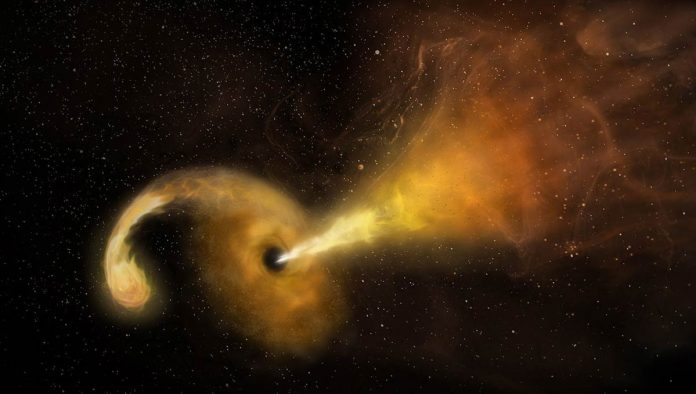Our Milky Way and every other galaxy have a massive black hole in its centre. The gravity of the black hole influences the stars around it. The stars orbit around the black hole without incident. Sometimes a star will wander a little too close and the black hole will “make a meal” of the star. Astrophysicists call it spaghettification.
The stars are devoured and their remains swirl around the black hole and glow with light of different frequencies. Telescopes can detect it. Sometimes, the stellar remains are expelled in powerful jets that shine with radio-frequency light waves.
Astronomers have discovered what appears to be one of these black-hole-eating-a-star events. This event is also known as tidal disruption events or TDEs. The scientists have used archival observations made by radio telescopes. Till now, scientists have discovered 100 TDEs and the new one was the second to be discovered by radio waves. The first was discovered in 2020.
The new TDE was also discovered by astronomers at the University of Toronto.
Scientists have named the new TDE event as J1533+2727. Scientists have scanned through decades of radio data captured by the National Radio Astronomy Observatory’s Karl G. Jansky Very Large Array in New Mexico. Scientists have compared radio observations and found that J1533+2727 was fairly bright in the mid-1990s but had dramatically faded by 2017.
Scientists then searched the archives of the NRAO’s Green Bank 300-foot telescope. They found out that the same object was even brighter in 1986 and 1987. J1533+2727 then faded by a factor of 500.
The scientists also included new VLA observations. Scientists think the new TDE occurred when a supermassive black hole at the heart of a galaxy 500 million light-years away crushed a star. It then expelled a radio jet traveling at near the speed of light. Scientists related three other TEDs with these so-called relativistic jets so far. But those were found in galaxies times farther away.
TDEs are valuable tool for studying massive black holes. Scientists theorized in the 1980s and finally detected for the first time in the 1990s. Then scientists found 100s of TED. These have become new means to study black holes.

